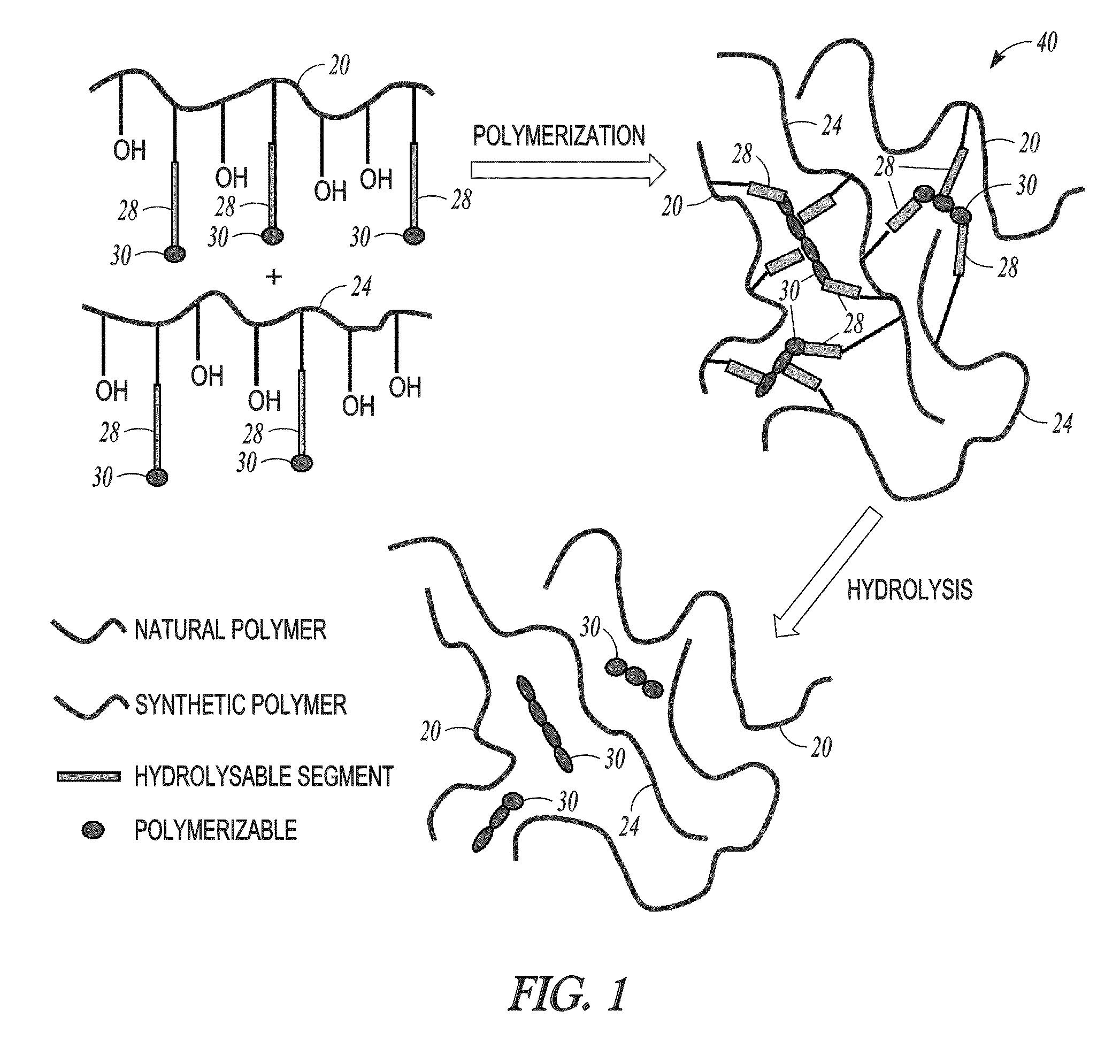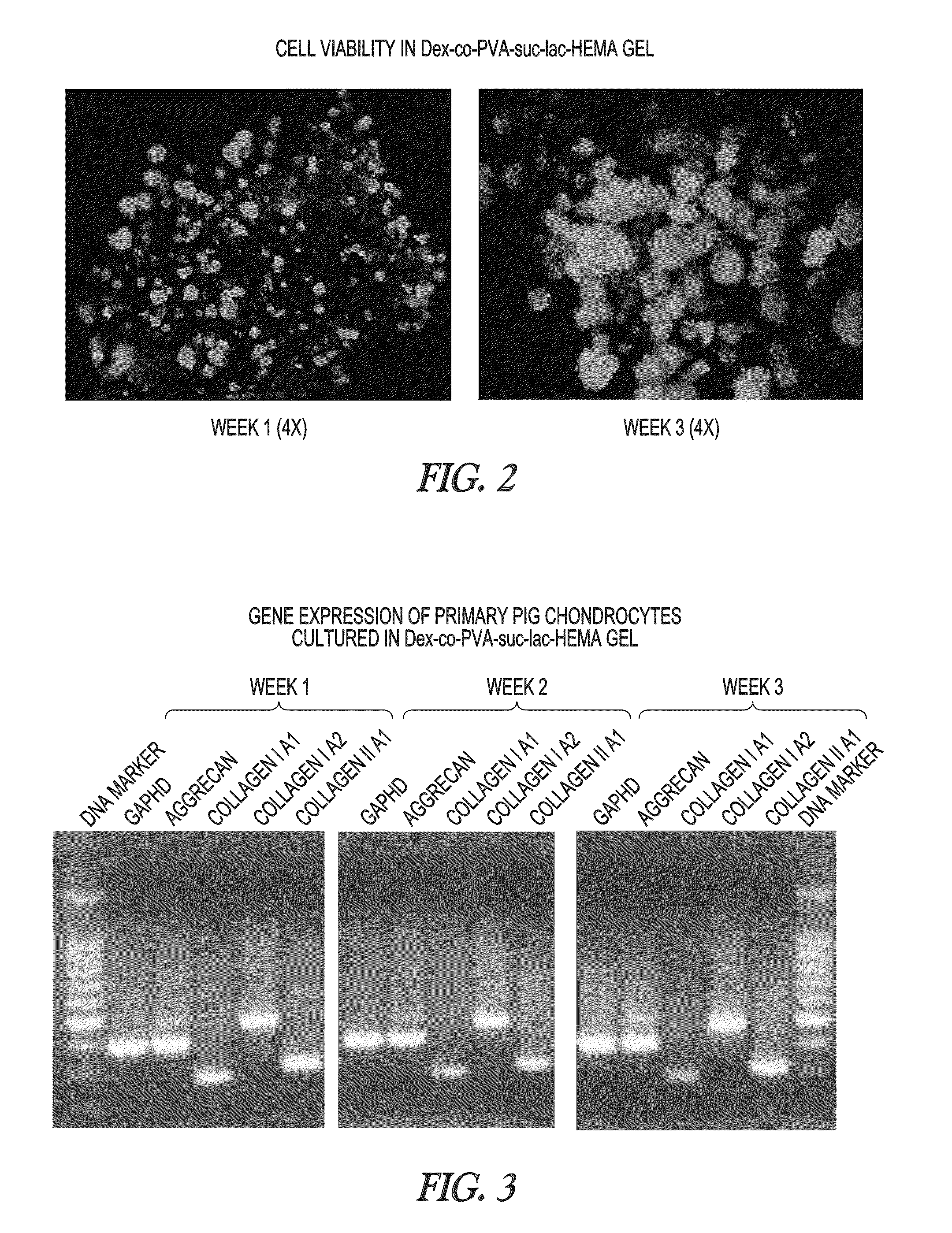Hydrogel-forming composition comprising natural and synthetic segments
- Summary
- Abstract
- Description
- Claims
- Application Information
AI Technical Summary
Benefits of technology
Problems solved by technology
Method used
Image
Examples
example 1
[0050]In the following example, dextran is used as the natural polymer and polyvinyl alcohol is used as the synthetic polymer, but it will be understood that other natural or synthetic polymers could be used, as long as there are sufficient hydroxyl groups on the polymer backbones to serve as binding sites for the hydrolysable segments. For the dextran, succinate-lactide is used as the hydrolysable component, and acrylate units in the form of 2-hydroxyethyl methacrylate (HEMA) are used as the cross-linkable component.
[0051]Step 1. Preparation of Solution of Dex-suc-lac-HEMA
[0052]First, a complex of HEMA-lac is prepared. A solution is prepared by combining 0.728 mL (6 mmol) of 2-hydroxyethyl methacrylate (Sigma-Aldrich #477028) with 1.728 g (12 mmol) L-lactide (Sigma-Aldrich #367044) and heating in an oil bath at 110° C. with stirring under a nitrogen atmosphere until the lactide melts. Once melting occurs, 18 μL of Tin(II) 2-ethylhexanoate (0.06 mmol, 1 mol % with respect to HEMA) (...
example 2
[0072]A dextran-PVA hydrogel solution as described in Example 1 is used to encapsulate 4 million chondrocytes in 100 μL solution. Hydrogels are made from the solution by UV cross-linking at 80 mW / cm2 for 1.5 minutes or at 33 mW / cm2 for 2 minutes. The hydrogels so made are stored in a 24 well plate with 1.5 ml DMEM / F12 with 10% FBS (changed daily). Upon one week of culture, the sample is split for viability analysis using the Live / Dead® Viability / Cytotoxicity Kit of Invitrogen, biochemical analysis (stored at −20° C.) and histology / IHC (embedded in agarose, fixed with formulin). The results indicate that the cells are viable in each of the hydrogel samples.
[0073]Variations on the methods of obtaining chondrocytes will be understood by those skilled in the art. Joints from which chondrocyte are to be prepared should be stored on ice. In one method of obtaining chondrocytes, the joints are sprayed with 70% ethanol and allowed to sit for about 5 minutes. The joints are opened under ster...
PUM
| Property | Measurement | Unit |
|---|---|---|
| mol % | aaaaa | aaaaa |
| temperature | aaaaa | aaaaa |
| diameter | aaaaa | aaaaa |
Abstract
Description
Claims
Application Information
 Login to View More
Login to View More - R&D
- Intellectual Property
- Life Sciences
- Materials
- Tech Scout
- Unparalleled Data Quality
- Higher Quality Content
- 60% Fewer Hallucinations
Browse by: Latest US Patents, China's latest patents, Technical Efficacy Thesaurus, Application Domain, Technology Topic, Popular Technical Reports.
© 2025 PatSnap. All rights reserved.Legal|Privacy policy|Modern Slavery Act Transparency Statement|Sitemap|About US| Contact US: help@patsnap.com


